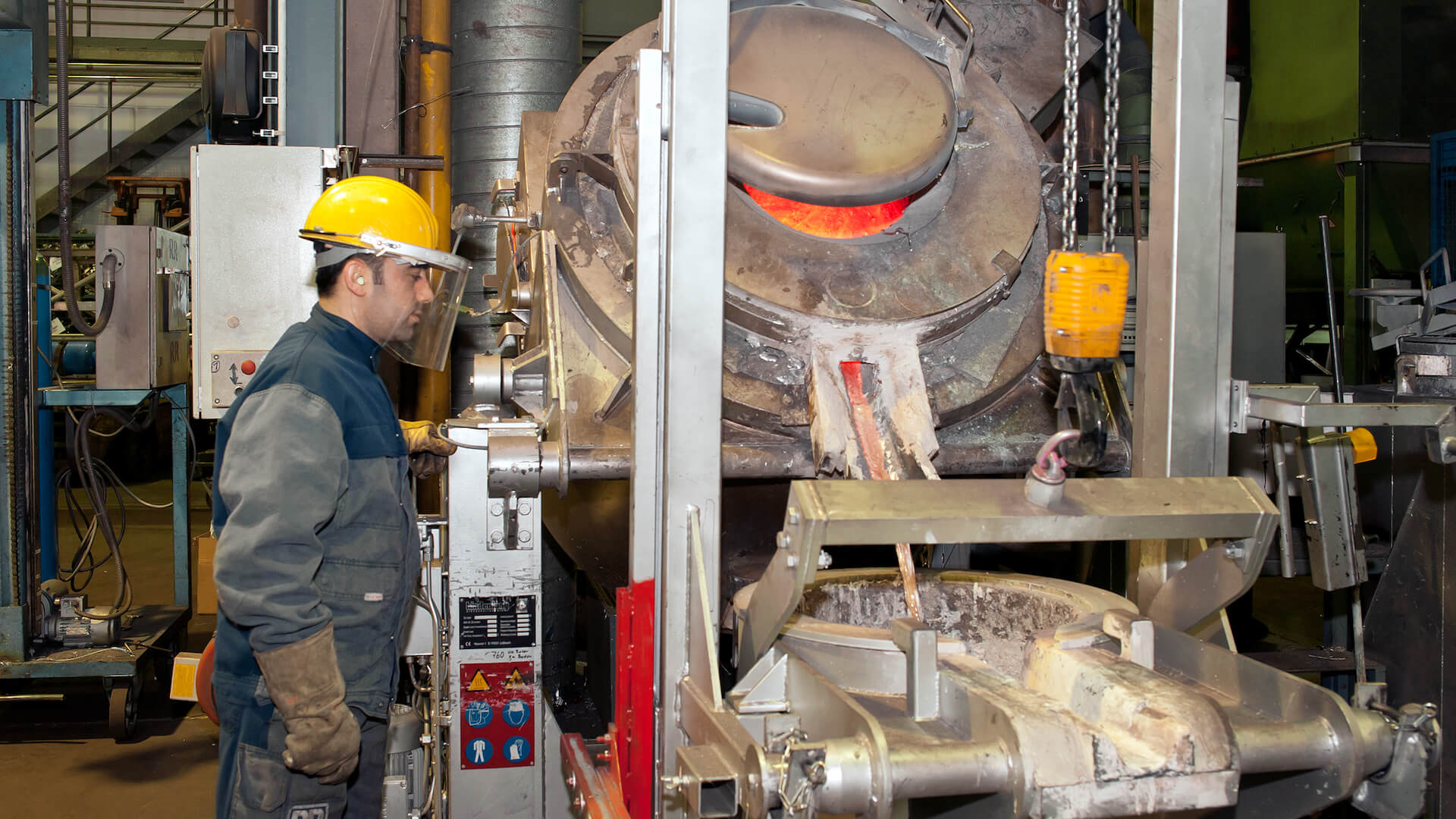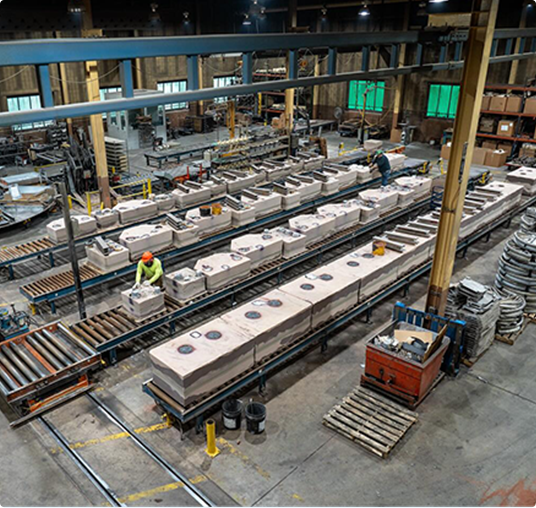Inside Wisconsin Aluminum Foundry: Next-Generation Production Processes
Wiki Article

Understanding the Refine: Just How Aluminum Foundries Develop High-Quality Products
Aluminum foundries play a crucial duty in generating high-quality products through a meticulous procedure. It begins with melting raw aluminum, which eliminates contaminations. Later, numerous molding methods shape the metal right into wanted types. Precision throughout pouring and solidification is crucial to fulfill precise specifications. The last stages entail completing touches that boost sturdiness and look. As innovation developments, these processes are refined additionally. What innovations are forming the future of aluminum foundries?The Melting Process: Changing Raw Aluminum
The melting procedure works as a vital action in changing raw aluminum into useful products. Aluminum scrap or raw ingots are put in a heater where they are subjected to high temperatures, normally reaching around 660 degrees Celsius. This intense warmth creates the aluminum to liquefy, permitting contaminations to climb to the surface, where they can be skimmed.Different melting techniques, such as induction melting or gas-fired melting, may be utilized relying on the specific demands of the factory. The selection of method can affect power efficiency and metal high quality. Keeping precise temperature control is vital to guarantee uniform melting and to prevent oxidation that can endanger the product.
As soon as thawed, the aluminum is ready for further processing, setting the stage for subsequent operations that will certainly mold and mildew it into details shapes and products. Aluminum Foundry. The high quality of the melting procedure straight impacts the stability of the last aluminum products produced
Molding Techniques: Shaping the Future
After the aluminum has been melted and contaminations eliminated, it is prepared for shaping via different molding techniques. Among the most prevalent approaches is sand spreading, where a mold and mildew is created from sand and a binder. This strategy permits elaborate designs and is cost-efficient for reduced to medium production runs. An additional prominent method is pass away casting, which entails requiring liquified aluminum right into a steel mold under high stress. This method results in high accuracy and smooth surfaces, making it excellent for mass manufacturing.
Permanent mold spreading is also made use of, utilizing multiple-use molds that boost dimensional accuracy and surface area finish. Each molding technique uses unique benefits, allowing foundries to customize their procedures based on item specs and manufacturing volume. By picking the suitable approach, aluminum foundries can guarantee remarkable quality and performance in their end products, strengthening their function in different sectors.
Pouring and Solidification: The Art of Casting
Putting liquified aluminum into molds marks a crucial stage in the spreading process, where accuracy and timing are necessary - Aluminum Castings. The factory group should meticulously control the temperature of the aluminum to ensure optimal fluidness, avoiding defects such as porosity or cool shuts. As the metal is poured, it moves right into the complexities of the mold and mildew, loading every dental caries to create the desired shapeSolidification starts instantly as the molten aluminum transforms and cools down to a strong state. This stage is affected by a number of variables, including the mold material, thickness, and ambient temperature. The cooling rate should be handled to prevent stress and anxiety cracks or bending in the next ended up item.
As soon as strengthened, the aluminum tackles the specific dimensions and qualities of the mold, setting the stage for subsequent handling. This putting and solidification procedure exhibits the fragile equilibrium of art and science in aluminum casting, vital for creating premium products.
Completing Touches: Guaranteeing High Quality and Precision
Assuring top quality and accuracy in aluminum products requires meticulous focus to information during the completing process. This stage includes different techniques intended at improving the surface characteristics and dimensional precision of the cast components. Common approaches consist of machining, surface therapy, Recommended Reading and sprucing up. Machining fixes any dimensional disparities and accomplishes the desired resistances, while surface therapies, such as anodizing or powder finish, offer deterioration resistance and enhance aesthetic allure.Polishing gets rid of surface imperfections, causing a smooth finish that fulfills strict requirements. Quality control is paramount; each finished piece goes through rigorous assessment to identify any issues. Advanced determining devices, like coordinate determining equipments (CMM), are usually used to ensure conformity with design requirements. Additionally, knowledgeable service technicians play an essential function, bringing experience and competence to identify problems that equipments may neglect. This detailed finishing procedure ultimately guarantees that the aluminum items meet client assumptions for top quality and performance.
Advancements in Aluminum Foundry Modern Technology
The quest of top quality and accuracy in aluminum products has caused substantial advancements in foundry innovation. Advancements such as robotic automation have streamlined processes, improving performance and lowering human mistake. These robots are now with the ability of doing intricate jobs, consisting of precise mold handling and material pouring, which guarantees constant product high quality.In enhancement, the assimilation of computer system mathematical control (CNC) equipments has actually revolutionized machining operations, permitting complex styles and tighter resistances. Advanced simulation software program assists in far better procedure planning by predicting prospective problems and optimizing steel circulation. Additionally, the fostering of eco pleasant methods, such as recycling aluminum scrap and using low-emission furnaces, has actually enhanced sustainability in the market.

Regularly Asked Concerns
What Types of Aluminum Alloys Are Frequently Used in Shops?
Typically made use of aluminum alloys in foundries include 356, 319, and 413. These alloys are recognized for their outstanding casting residential or commercial properties, mechanical toughness, and resistance to rust, making them ideal for a broad array of applications.How Do Foundries Make Certain Ecological Sustainability in Their Procedures?
Foundries carry out ecological sustainability by recycling aluminum scrap, maximizing energy effectiveness, minimizing emissions, using eco-friendly materials, and adhering to governing standards, consequently decreasing their ecological footprint while preserving manufacturing quality and effectiveness.What Precaution Are Executed in Aluminum Foundries?
Aluminum foundries carry out numerous precaution, consisting of individual safety devices, air flow systems, normal safety training, emergency action methods, and tools upkeep checks. These practices aim to reduce risks and ensure the wellness of all workers entailed.How Do Foundries Deal With Flaws in Cast Products?
Factories attend to flaws in actors products by employing rigorous assessment methods, including visual checks and non-destructive testing. When problems are identified, they may rework or ditch items, ensuring adherence to quality criteria and consumer requirements.What Is the Normal Preparation for Aluminum Casting Projects?
The common lead time for aluminum casting projects varies from a couple of weeks to have a peek at these guys a number of months. Aspects influencing this timeline include layout complexity, production volume, and the schedule of products, which vary considerably throughout various foundries.Aluminum foundries play a necessary function in producing premium products through a thorough procedure. Aluminum Foundry. The factory team have to very carefully manage the temperature of the aluminum to guarantee perfect fluidness, stopping defects such as porosity or cool shuts. The quest of top quality and accuracy in aluminum products has actually led to considerable advancements in factory technology. Generally utilized aluminum alloys in foundries include 356, 319, and 413. Aluminum foundries apply different safety procedures, including individual safety equipment, air flow systems, regular safety and security training, emergency reaction procedures, and equipment upkeep checks
Report this wiki page